Although not a sightseeing spot, Nanzoin is well worth a visit

Nanzoin (南蔵院) is a Shingon Buddhist temple just 20 minutes by train from Hakata Station in Fukuoka City, Kyushu. I was lucky to be able to visit it during a recent trip to Fukuoka.
The temple was originally located on Mount Koya, the center of Shingon Buddhism. During the anti-Buddhist movement of the late 19th century, along with other temples, statues, and sutras throughout the country, Nanzoin was to be destroyed. But due to the persistent petitioning of the local people, it was saved and moved to its current location in Sasaguri, Fukuoka, in 1899.
Visiting Nanzoin
On a bright, sunny, summer morning, I arrived early at the tiny Kido-nanzoin-mae train station, chatted with the friendly stationmaster, and set off for the short walk to the temple.
I turned a corner and came upon a bridge spanning the Tatara River, aptly named “Melody Bridge.” Along both sides is a sort of xylophone, which you can strike with a mallet to play a sweet melody while you walk across.
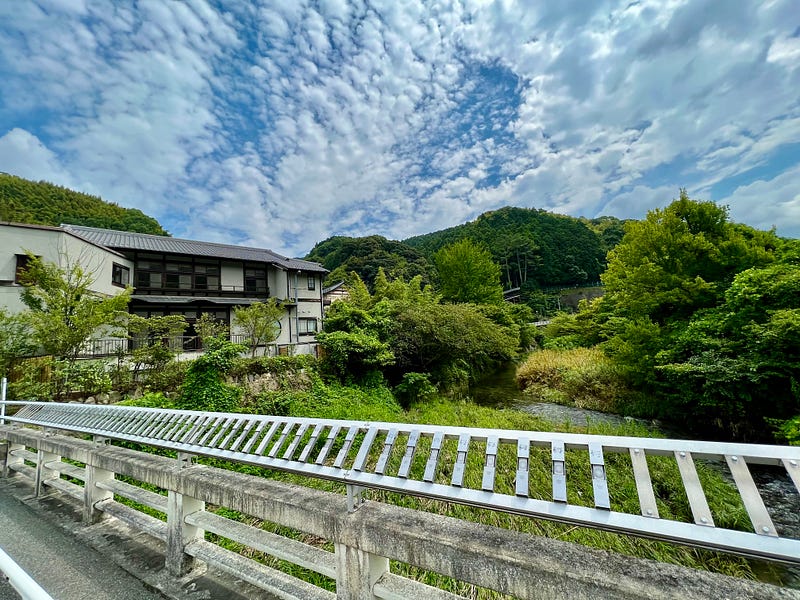
Around another corner and I started up the path that leads to Nanzoin temple. Nestled on the side of a lush green hill, the grounds are filled with innumerable statues among which is the largest bronze Buddha statue in the world.
All the other large statues of the Buddha in Japan are in a sitting pose. The Nanzoin statue, though, portrays the Buddha lying down as he is entering Nirvana. The statue is 41 meters long, 11 meters high, and weighs approximately 300 tons.
For reference, New York’s Statue of Liberty is 46.05 meters tall, made of wrought iron with a copper shell, and weighs 220 tons.
The Reclining Buddha Statue

In thanks for continuous gifts of medical supplies, stationery goods, and other aid sent to the children in southeast Asia and Nepal, in 1988, the Buddhist Congress of Myanmar presented Nanzoin with the sacred ashes of three Buddhas. This reclining Buddha was built as a repository for those ashes.
I donated to the temple which allowed me to enter the hallowed area behind and within the statue. I was given a long, thin wooden plaque upon which to write a prayer. This I carried into the sanctuary. I removed my shoes and was given a bag in which to carry them.
Before me lay a long, narrow hallway. The floor was tiled with a line of 88 square tiles, each of which contains sand from one of the 88 temples of the Shikoku pilgrimage. This important pilgrimage on the island of Shikoku was established by the founder of Shingon Buddhism, Kukai, in the 9th century.
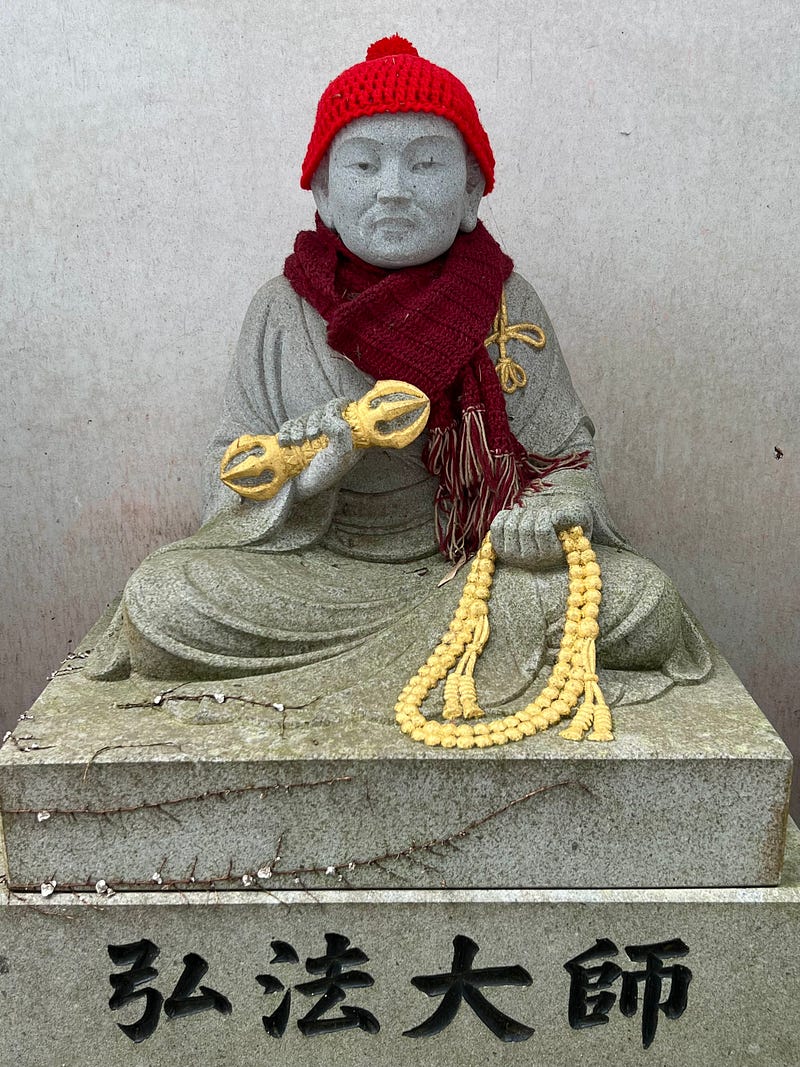
Stepping on each tile within Nanzoin’s Buddha is like stepping foot on each of the pilgrimage temples’ grounds. It brought to mind another one-stop pilgrimage, the amazing spiral Sazaedo temple in Aizuwakamatsu, Fukushima.
When I reached the middle of the hallway, I climbed a narrow staircase to the right and offered my prayer plaque to a woman standing in a small darkened area shared with Buddhist statues and offerings. I paid my respects to the Buddha, then went down another staircase to continue along my 88 step pilgrimage.
At the end of the hall, I put my shoes on and stepped back into the sunlight. Before me was a stall selling amulets, and I was given 3 small darts with rubber tips to toss into boxes several meters away. If I got one in, I would be awarded a free amulet. Although this temple is famously lucky — rumor has it that one of its chief priests once won the lottery — I was unable to score even one amulet.
No worries, though. Next, I checked out the Buddha’s marvelous feet.
The Soles of the Buddha’s Feet
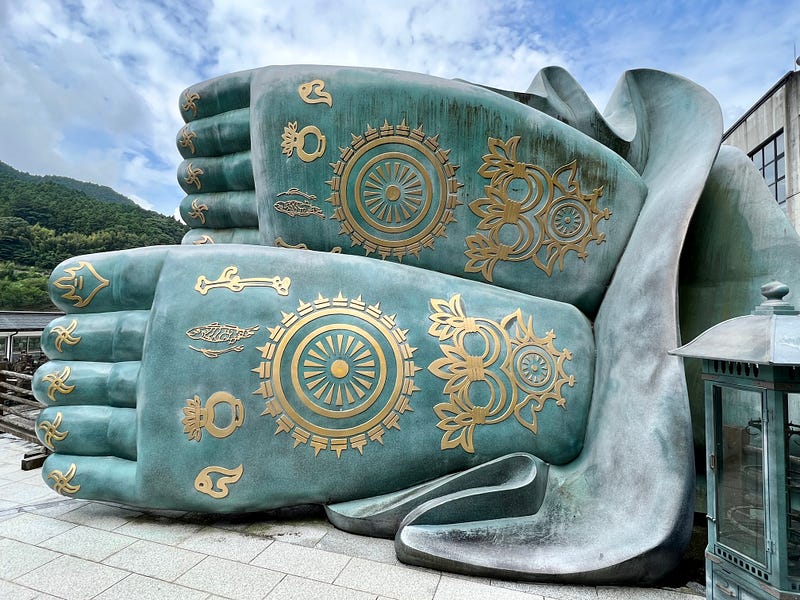
Long ago in India, believers felt unworthy to make statues of Buddha, so instead, they carved images of the soles of his feet and worshipped those. According to a sign nearby, the patterns on the feet represent the gentle teachings and mercy of Buddha.
Connect with the Buddha
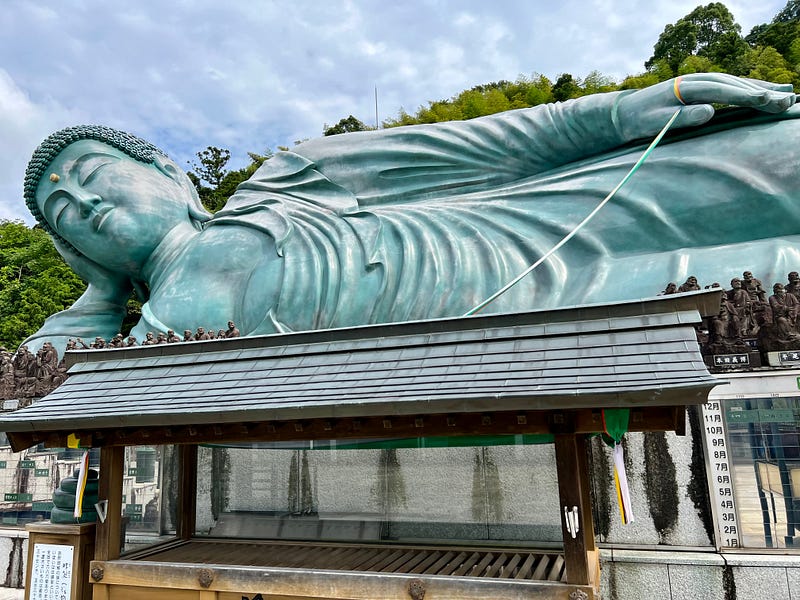
Attached to the Buddha’s hand are ribbons that lead to an offering box. Praying, while holding onto the five colored ribbons, allows you to be imbued with spiritual power from the Buddha as he is reaching enlightenment.
Enchanting Statues
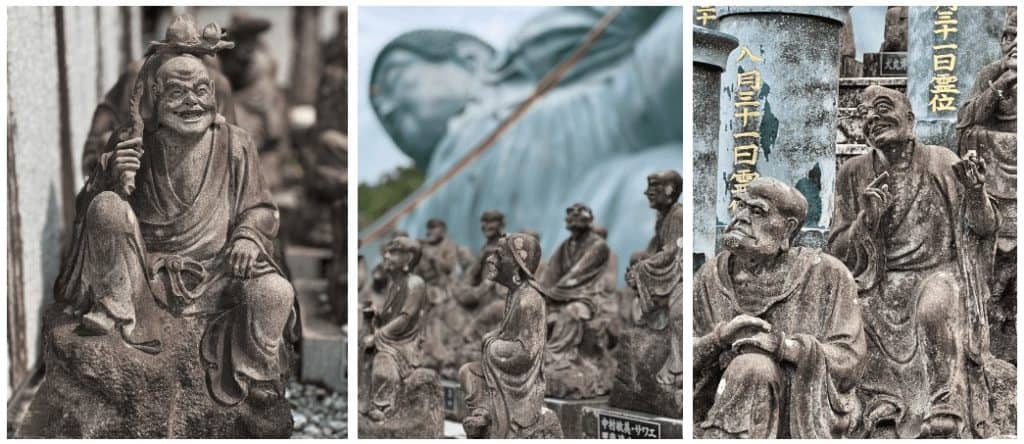
Five hundred disciples are portrayed in delightful form in front of the statue, with more in other areas of the temple grounds. Each one is remarkably detailed and filled with life and personality. I’m sure I could spend all day admiring them.
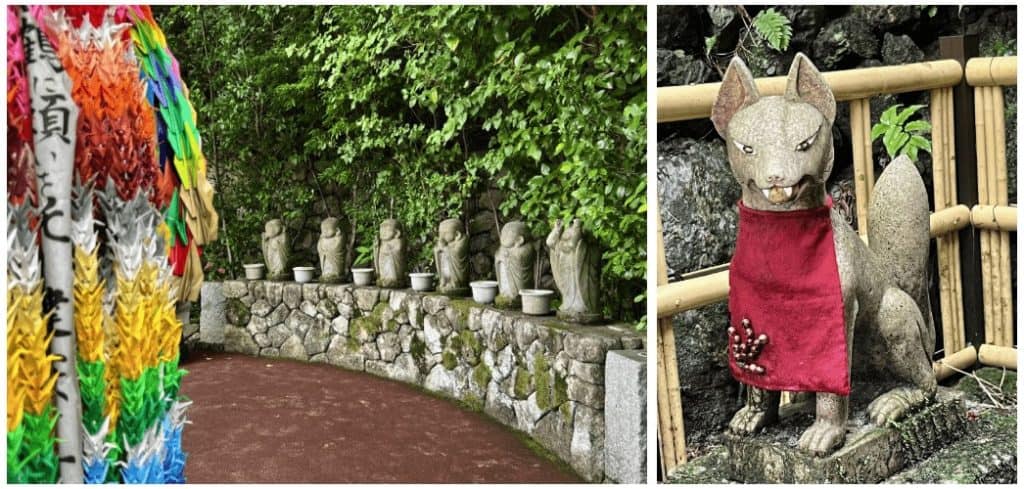
There are Jizo statues, and a shrine to the Shinto deity, Inari, an enormous and fierce statue of Fudō Myōō, and many other works of fine craftsmanship portraying deities throughout the grounds, much of which is off-limits to photography.
Respectfulness
Nanzoin has signs to remind visitors that it is a temple, not a sightseeing spot. Visitors are reminded to be quiet, not to eat or drink on the grounds, nor to disturb the atmosphere in any way.

Keeping those points in mind, I highly recommend a visit to this amazing temple, filled with beautiful statues, quiet paths, and pleasant waterfalls.
If you have questions about Japan or suggestions for articles, please add them in the comments. For more photos and information on Japan, follow me on instagram at: https://www.instagram.com/more_than_tokyo/




